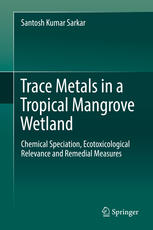

Most ebook files are in PDF format, so you can easily read them using various software such as Foxit Reader or directly on the Google Chrome browser.
Some ebook files are released by publishers in other formats such as .awz, .mobi, .epub, .fb2, etc. You may need to install specific software to read these formats on mobile/PC, such as Calibre.
Please read the tutorial at this link: https://ebookbell.com/faq
We offer FREE conversion to the popular formats you request; however, this may take some time. Therefore, right after payment, please email us, and we will try to provide the service as quickly as possible.
For some exceptional file formats or broken links (if any), please refrain from opening any disputes. Instead, email us first, and we will try to assist within a maximum of 6 hours.
EbookBell Team

5.0
110 reviewsThis book offers a comprehensive and accessible guide covering various aspects of trace metal contamination in abiotic and biotic matrices of an iconic Indian tropical mangrove wetland – Sundarban. Divided into nine chapters, the book begins by discussing the fundamental concepts of sources, accumulation rate and significance of trace metal speciation, along with the impact of multiple stressors on trace metal accumulation, taking into account both tourist activities and the exacerbating role of climate change. The second chapter presents a detailed account of the sampling strategy and preservation of research samples, followed by exhaustive information on sediment quality assessment and ecological risk, instrumental techniques in environmental chemical analyses, quality assurance and quality control, along with the Sediment Quality Guidelines (SQGs). Using raw data, the sediment quality assessment indices (e.g., pollution load index, index of geoaccumulation, Nemerow Pollution Load Index etc.) and conventional statistical analyses are worked out and interpreted precisely, allowing students to readily evaluate and interpret them. This is followed by chapters devoted to trace metal accumulation in sediments and benthic organisms, as well as acid-leachable and geochemical fractionation of trace metals in sediments. The book then focuses on chemical speciation of butylin and arsenic in sediments as well as macrozoobenthos (polychaetous annelids). Finally, potential positive role of the dominant mangrove Avicennia in sequestering trace metals from rhizosediments of Sundarban Wetland is elaborately discussed. This timely reference book provides a versatile and in-depth account for understanding the emerging problems of trace metal contamination – issues that are relevant for many countries around the globe.